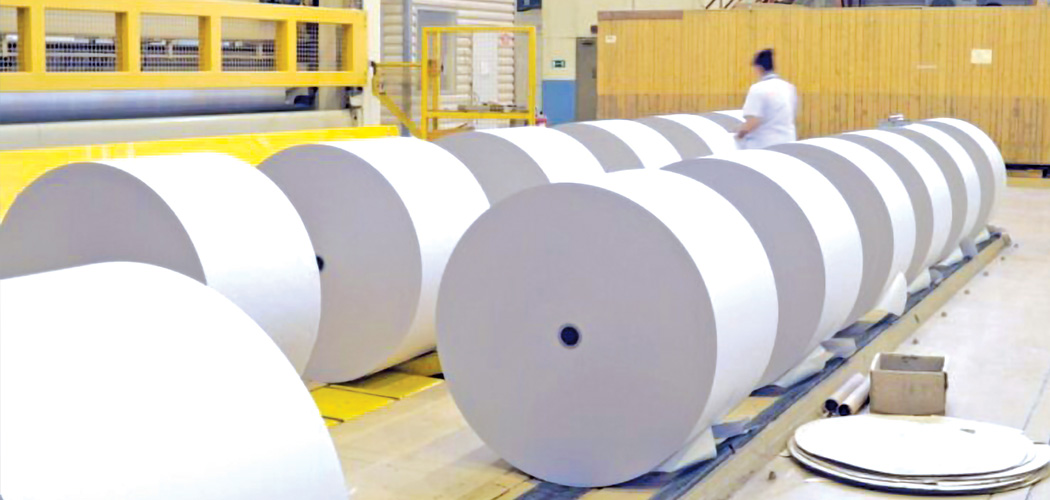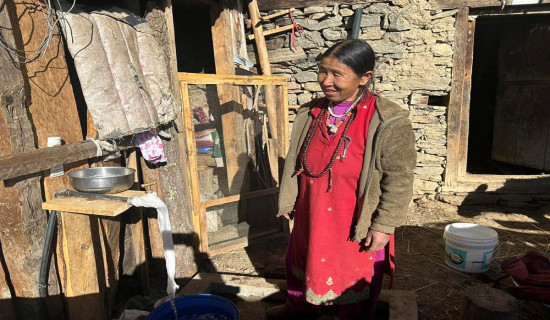- Monday, 15 December 2025
Global Paper Crisis: Impact On Nepal
Chiranjivi Sharma
What do we need to start our day? A nice cup of coffee and a morning newspaper, right? How can we forget pieces of paper on which we have set our work plans for the day?
We cannot even think of forgetting our beautiful novels and storybooks that we read before bed and many other things made out of the paper we use every day. Maybe, all these things must have reminded you of the significance of the paper and paper-made products in our life.
Starting from your early life, you might have read lots of books, written lots of beautiful stories, and published lots of ideas with the help of paper-made items, and, maybe, these things might have made it clear to you how paper has dominated our life.
Paper that has always helped us undertake so many things is now at risk. The global paper market has crashed due to which many countries along Nepal have been facing problems. A quick look at the recent global paper market crash and its impact on Nepal will make it clear to you how a country like Nepal has grappled with the problem.
Over 2000 years ago, the paper was invented in China. Paper gradually assisted human beings as a means of communication that helped people upgrade their way of communication from verbal means to more effective handwritten sharing. It extended the potential of communication and also helped preserve multiple data, information, and artistic works like stories and sketches in a better way.
In these 2000 years, humans used billions of tons of paper for a variety of purposes like education, data-keeping, arts, communication, and several other business purposes.
However, as the world is growing with new technologies, the importance and use of paper have slackened. With the emergence of technology, several different ideas have emerged to counter the use of paper in the educational and communication fields. Numerous information-sharing apps aptly integrated on mobile phones and personal computers have resulted in a rapid slowdown in the use of paper-made items. However, the higher use of technology has not discouraged the use of paper, as the popularity of paper-based products is still high.
Reports show that the world produces millions of metric tonnes of paper every year to fulfil its global demands. The Importance of paper supplies needed for manufacturing the educational curriculums is the one reason that has put the paper in constant demand.
However, in recent years, owing to the rise in some factors, paper manufacturing is getting unaffordable. Firstly, conflicts among countries have led to an ill impact on paper production. An exorbitant rise in petroleum and coal prices used for the industrial production of paper and transportation has made paper production expensive. Reports reveal that prices of petroleum and coal have gone up by 35-50 per cent in recent times.
Investors have already faced problems, and new investors are reluctant to enter the business as investing in paper manufacturing industries due to its costly raw materials, unstable market, and slowing demands has become a challenging proposition. In recent years, paper pulp providers have avoided expensive ways to produce raw materials and started depending on scraps that are recycled to make paper pulps, which is one of the reasons why paper is getting expensive.
In the meantime, the COVID-19 pandemic has left the worst impact on the paper market. During the pandemic period, demand for paper slackened because every workplace and educational sector followed the safest way - working from home. This is a paper-free working module.
This policy adaptation is still ongoing. But as the world is gradually getting over the pandemic, the demand for paper is now increasing.
Here, one should remember that the prime reason for the higher paper demand was a reality during the pre-pandemic time was publishers of all hues and stripes were willing to publish their products. But they failed to do so after the outbreak and spread of the pandemic. All these factors directly affected the Nepalese paper market. Nepal depends on imports to fulfil its paper demands. It has very few paper-manufacturing units, with some having lower production capacity. This is why an adequate supply of paper needed for the Nepali market is hard to fulfil.
Currently, Nepal is facing import problems due to low foreign currency reserves. Due to this, the government is forced to limit the imports of lots of essentials. Nepali investors who are investing on paper are facing additional problems. The investors have to open letters of credit (LCs) in banks. Although our investors are interested in the paper business, the fragile market and unstable prices, which keep on fluctuating, are adding risk to investments.
Publication houses like Janak Education Material Center and several other publication houses that work for the government are struggling to print books
and other items. They faced obstacles such as
price hikes, high deposits needed for LCs, and an unstable market.
According to the suppliers working for the government, the price of educational materials that remained constant for the last 5-6 years, now has almost doubled, for which they are afraid for bidding tenders for educational material supply. They have warned every government body, stakeholders, parents, and students about the worst conditions that Nepal may face in its educational sector shortly. The paper-related market is at risk of crashing this time.
Some recent observations on paper market prices show that all kinds of paper prices have risen by a higher percentage. The price/rates of an Indian map litho went down to NRs100 per kg at the end of April last year has reached NRs 190 per kg. According to some experts, these price rates are not going to decrease but will increase more aggressively in the days ahead.
Like, the prices hike on the Indian map litho, the price rates of art paper have sky-rocketed. Price/rates of art paper was NRs 125-140 per kg just a year ago is now trading at NRs 235-250 per kg, like the price of Indian map litho this figure is also not going to slow down, looking at the market conditions, we can predict this price rate can cross the tag of NRs 250 per kg. Like the hike in the price range of Indian map litho and art paper, price of Carbonless Paper, Sticker Paper, Double A A4 paper, Newsprint paper, weightless Paper, Parchment paper, Colour paper Nepali, Photocopy paper, Nepali SSWOP, Ledger paper, SWP/DWP/DELUX, Tuffcote, and Card Board and Color Mapthilo. has also raised by 20-50%.
Unlike other forms of paper, whose price range has changed highly, the price of wood-free paper has not change much because enough stock remains on the market to face its market demands.
The Nepali educational sector is getting weaker. Physical classes, schools, colleges, and other educational institutions remained closed during the pandemic period throughout the world, while other countries started to set up online mediums to educate students. However, the conditions for Nepal were worse.
Late on in finding a substitute way of offline learning, students all over Nepal struggled to learn. The lack of technology, online curriculums, and proper system collectively deprived Nepalese students of education. The students hailing from villages and remote areas lacked quality education. This time, when our country is struggling to find a way out of the inflation that occurred due to insufficient foreign reserves, educational needs like curricula made out of papers are hard to come by.
Now, the dearth of foreign currency reserves has played spoilsports just like in Sri Lanka which is currently passing through its worst economic crisis. Due to a lack of foreign reserves and high debts, the island nation remained unable to import enough paper supplies to fulfil its paper demands, due to which, the Sri Lankan government had to cancel examinations for students.
Many say students and other institutions in Nepal may soon be hit by a shortage of paper. All the government bodies, stakeholders, parents, and students should think seriously about such an emerging crisis to avert the worst consequences.
(Sharma is the CEO of a private entreprise)
How did you feel after reading this news?

















